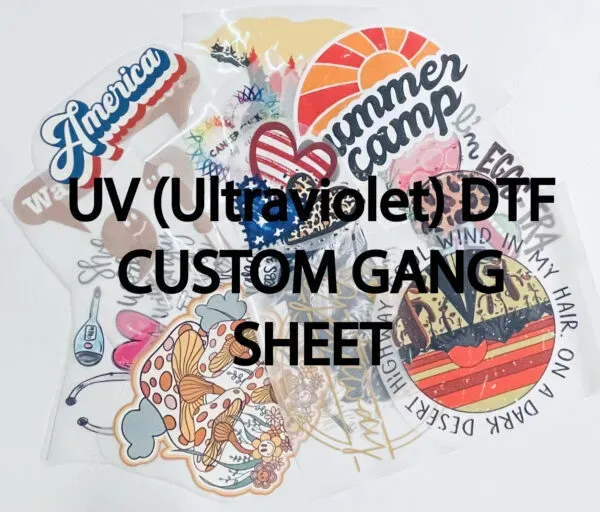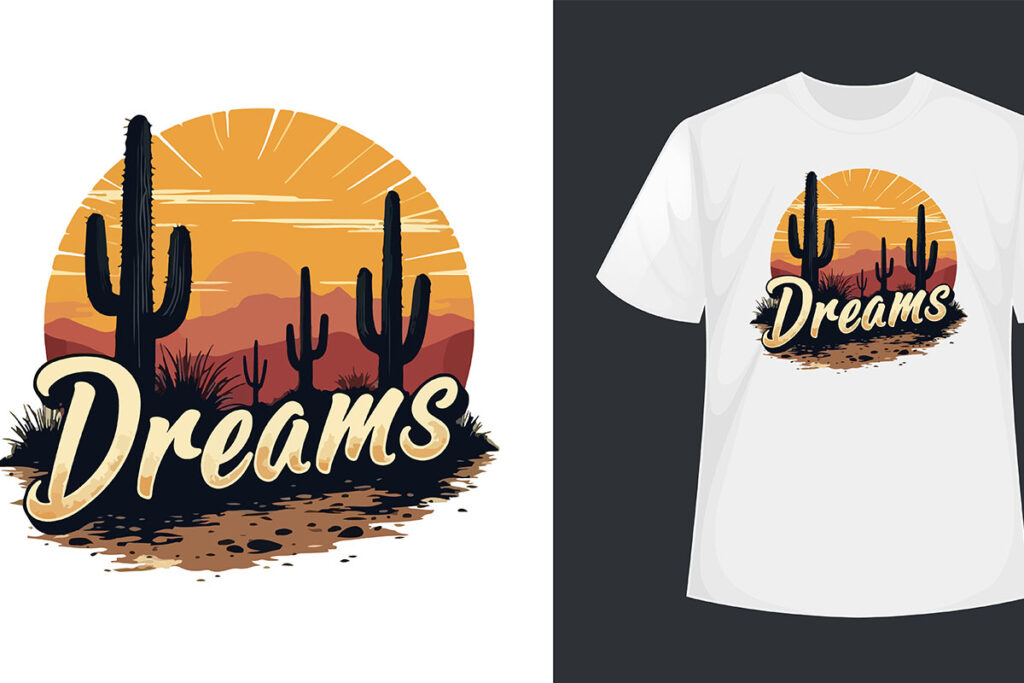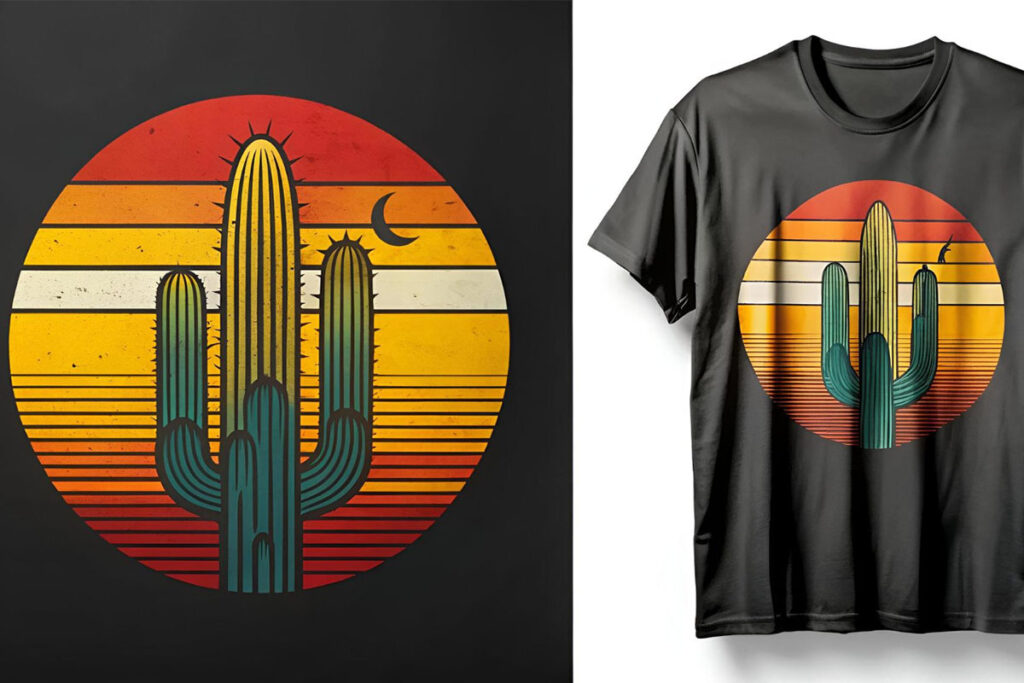In the ever-evolving landscape of printing technology, UV DTF Gangheet is making waves as a revolutionary approach that blends creativity with advanced design technology. This cutting-edge method harnesses the power of UV printing to deliver stunning results, making it ideal for numerous applications, including apparel printing and customized merchandise. By ensuring that inks are dried instantly using ultraviolet light, UV DTF Gangheet enhances both the durability and vibrancy of prints, setting new standards in the industry. Businesses keen on sustainable printing will find that this technique not only meets eco-conscious demands but also opens new avenues for innovation in design. In this blog post, we will explore the nuances of UV DTF Gangheet and its game-changing potential for designers and brands alike.
Unveiling the capabilities of UV Direct-to-Film (DTF) Gangheet reveals an innovative solution for modern printing challenges. This advanced method, often recognized for its versatility, combines traditional techniques with contemporary digital processes to deliver remarkable quality. By utilizing ultraviolet (UV) light for curing, the printing technique ensures that colors are not only vibrant but also long-lasting, appealing to a range of industries—including fashion and promotional products. As the trend towards sustainable printing grows, UV DTF Gangheet stands out by offering eco-friendly ink options that reduce environmental impact without compromising on quality. In the following sections, we will dive deeper into how this method transforms the design and application phases from concept to reality.
Understanding UV DTF Printing and Its Benefits
UV DTF printing, or Ultra Violet Direct-to-Film printing, amalgamates traditional printing methods with advanced UV technology, setting a new standard for high-quality prints. One primary advantage of this method is its ability to cure inks instantly as they are applied to the film. This feature not only enhances the printing speed but also ensures that the vivid colors remain intact during the transfer process. As a result, designers are now empowered to produce intricate details that would have been challenging to achieve with conventional methods. Furthermore, this technique allows for printing on a myriad of surfaces, including textiles, plastics, and even wood, expanding creative possibilities for brands across various sectors.
The environmental impact of UV DTF printing cannot be overlooked either, particularly as the industry shifts toward sustainable practices. Using eco-friendly inks that emit fewer volatile organic compounds (VOCs) than traditional alternatives means brands adopting UV DTF can resonate well with environmentally conscious consumers. This sustainability angle aligns perfectly with the modern ethos of responsible manufacturing, allowing businesses to enhance their brand reputation while also meeting market demands for greener products. Overall, UV DTF printing not only supports creative freedom and technical efficiency but also helps companies make strides toward sustainable printing.
The Design Process: From Concept to Reality
At the core of the UV DTF Gangheet process is the design phase, which is crucial for creating impactful prints. Designers begin by crafting intricate digital artworks using specialized software. The versatility of design options enabled by UV DTF allows for various styles, ranging from simple logos to complex graphics that tell a story. Once the digital file is complete, the next step involves translating these concepts into high-resolution prints. The unique nature of UV DTF allows designers to test multiple color schemes and finishes, ensuring that the end result truly reflects their intended vision and meets the high standards that today’s consumers expect.
Transitioning from design to production is seamless with UV DTF technology. Once the digital concept is finalized, it is printed onto a specially coated film using advanced DTF inks. These inks are engineered for durability and vibrant color retention, which is critical when transferring designs to various surfaces, such as fabrics for apparel printing or hard surfaces like metal and glass. This adaptability not only enhances a brand’s offerings but also reduces the risk of waste associated with traditional print runs, fulfilling both creative and business needs in one streamlined process.
Key Advantages of UV DTF Gangheet in Printing Industries
The key advantages of UV DTF Gangheet are driving its adoption in numerous sectors, particularly in apparel printing. One significant benefit is versatility; UV DTF can seamlessly print on diverse materials, which enables brands to expand their product lines without overhauling their production processes. This flexibility means that businesses can innovate and shift quickly in response to market demands, offering personalized products easily while minimizing excess inventory. Consequently, UV DTF is becoming the go-to choice for brands seeking to stand out in saturated markets.
Another notable advantage is the preservation of color integrity. The instant curing of inks helps to keep color vibrancy consistent, which is especially critical for promotional materials and fashion items that must withstand varying conditions. This durability ensures that printed designs maintain their aesthetic appeal over time, reinforcing customer satisfaction. Moreover, UV DTF technology has proven to facilitate customized printing efficiently, making it an excellent solution for businesses that cater to specific consumer needs, hence maximizing their market reach.
Emerging Trends in UV DTF Printing
The landscape of UV DTF printing is continuously evolving, driven by technological advancements and changing consumer preferences. One notable trend is an increasing demand for customization and personalization in products. As consumers seek unique offerings that reflect their individuality, brands have begun to capitalize on UV DTF technology’s ability to produce tailored designs on a large scale. This capability not only enhances customer engagement but also draws in consumers who are looking for one-of-a-kind items, reinforcing the value of personalized merchandise in today’s market.
Furthermore, industry reports indicate that as eco-consciousness grows among consumers, businesses are increasingly prioritizing sustainable printing methods. The adoption of UV DTF, with its use of low-emission inks and environmentally friendly processes, positions companies favorably amidst a backdrop of rising global demand for green products. Brands that successfully align their offerings with these emerging trends in UV DTF printing can create a significant competitive advantage, benefiting from both brand loyalty and improved market share.
Embracing UV DTF Technology for Competitive Advantage
As companies delve into UV DTF Gangheet, they unlock a plethora of benefits that can strategically differentiate them from competitors. This technology equips businesses with the ability to respond swiftly to market trends, allowing for shorter production cycles and rapid go-to-market strategies. In an industry where consumer preferences are constantly shifting, brands that leverage UV DTF can not only fulfill existing requests but also proactively innovate, setting new standards in product offerings and print quality.
Additionally, adopting UV DTF technology can significantly enhance operational efficiency. The combination of faster drying times, reduced waste, and the capability to print on various substrates streamlines the entire production process. By integrating UV DTF into their workflows, businesses can optimize resource allocation and reduce turnaround times while ensuring that the quality of the final product meets or exceeds market expectations. Ultimately, adopting this cutting-edge printing technique serves as a catalyst for innovation, sustainability, and growth.
The Future of UV DTF Gangheet in Design Technology
The future of UV DTF Gangheet in design technology appears promising as advancements continue to enhance printing capabilities. Emerging techniques, such as improved ink formulations and printer technologies, are expected to further elevate the quality and efficiency of UV DTF printing. As manufacturers focus on refining these technologies, businesses will be able to offer even more intricate designs, rapid production timelines, and sustained durability of prints—further asserting UV DTF’s position as a leading printing method in various sectors.
Moreover, as consumer awareness and demand for sustainable practices continue to rise, UV DTF printing’s eco-friendly attributes will play a crucial role in its proliferation. Companies that prioritize environmental consciousness in their operations will likely see increased customer loyalty and brand recognition. Thus, embracing UV DTF not only prepares businesses to meet current market demands but also sets the groundwork for future innovations in sustainable apparel printing and various design applications, reinforcing the relevance of this technology for years to come.
Frequently Asked Questions
What is UV DTF Gangheet and how does it work in design technology?
UV DTF Gangheet is a cutting-edge printing technology that combines UV printing with Direct-to-Film (DTF) methods. This process involves printing vibrant designs onto a coated film that is then heat-pressed onto various substrates. The UV light instantly cures the ink, resulting in high-quality prints with remarkable durability and detail, making it ideal for various applications such as apparel, home decor, and promotional items.
How does UV DTF Gangheet contribute to sustainable printing practices?
UV DTF Gangheet adopts eco-friendly ink formulations, reducing harmful emissions and waste typically associated with conventional printing techniques. This sustainable printing approach caters to the increasing consumer demand for environmentally responsible manufacturing, making it a preferred choice for brands aiming to enhance their green credentials.
What are the key advantages of using UV DTF Gangheet for apparel printing?
The main advantages of UV DTF Gangheet for apparel printing include its versatility to print on diverse materials, superior color integrity through immediate ink curing, and the ability to customize designs on demand. This technology significantly shortens production lead times and allows brands to quickly respond to fashion trends, enhancing customer satisfaction.
Can UV DTF Gangheet be used for materials other than textiles?
Yes, UV DTF Gangheet is remarkably versatile and can be utilized on various materials beyond textiles, including plastics, metals, and hard surfaces. This wide-ranging applicability allows designers and manufacturers to broaden their product offerings, catering to different markets without altering their printing processes.
How does the transfer process work in UV DTF Gangheet printing?
In UV DTF Gangheet printing, once the design is printed on the film, it undergoes a heat transfer process. The printed film is placed onto the final substrate and heat-pressed, ensuring that the cured ink bonds effectively to surfaces. This method guarantees durable and vibrant designs that withstand environmental elements, making it suitable for long-lasting products.
What trends are driving the adoption of UV DTF Gangheet technology in the market?
The growing demand for personalized products and the need for quick production turnaround are key trends driving the adoption of UV DTF Gangheet technology. Businesses are increasingly focused on customization to meet customer expectations, and this printing method facilitates rapid design creation and delivery, making it an ideal solution for both fashion and promotional items.
| Key Points | Details |
|---|---|
| What is UV DTF Printing? | A combination of traditional direct printing with UV light technology, curing inks immediately for vibrant, durable prints on various surfaces. |
| Design Process | Involves concept creation, printing on coated film, and transferring via heat-press, using UV light for strong ink bonding. |
| Key Advantages | Versatility, color integrity, sustainability, customization, and efficiency in production. |
| Market Trends | Growing digital printing market projected growth, increased demand for personalization and rapid production. |
| Brands Using UV DTF | Apparel and home décor brands utilizing the technology for consumer engagement and satisfaction. |
Summary
UV DTF Gangheet represents a significant innovation in printing technology, seamlessly merging traditional techniques with modern advancements. It fundamentally transforms the approach to design, enabling a fluid transition from conceptualization to tangible products. This process empowers designers with unparalleled creative control while also meeting the rising demand for environmentally responsible production practices. The versatility offered by UV DTF allows businesses to cater to diverse materials and customer preferences, positioning them favorably in a competitive landscape. As the industry continues to evolve, UV DTF Gangheet will undoubtedly remain at the forefront, shaping the future of personalized and sustainable print solutions.



